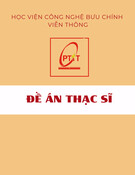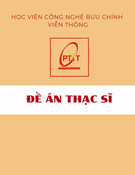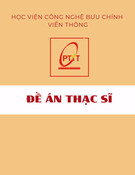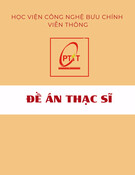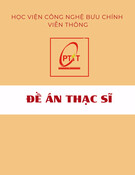
Annals of Mathematics
The topological
classification
of minimal surfaces in R3
By Charles Frohman and William H. Meeks III*

Annals of Mathematics,167 (2008), 681–700
The topological classification
of minimal surfaces in R3
By Charles Frohman and William H. Meeks III*
Abstract
We give a complete topological classification of properly embedded mini-
mal surfaces in Euclidian three-space.
1. Introduction
In 1980, Meeks and Yau [15] proved that properly embedded minimal sur-
faces of finite topology in R3are unknotted in the sense that any two such
homeomorphic surfaces are properly ambiently isotopic. Later Frohman [6]
proved that any two triply periodic minimal surfaces in R3are properly ambi-
ently isotopic. More recently, Frohman and Meeks [9] proved that a properly
embedded minimal surface in R3with one end is a Heegaard surface in R3and
that Heegaard surfaces of R3with the same genus are topologically equivalent.
Hence, properly embedded minimal surfaces in R3with one end are unknot-
ted even when the genus is infinite. These topological uniqueness theorems
of Meeks, Yau, and Frohman are special cases of the following general classi-
fication theorem which was conjectured in [9] and which represents the final
result for the topological classification problem of properly embedded minimal
surfaces in R3.
The space of ends of a properly embedded minimal surface in R3has a
natural linear ordering up to reversal, and the middle ends in this ordering
have a parity (even or odd) (see Section 2).
Theorem 1.1 (Topological Classification Theorem for Minimal Surfaces).
Two properly embedded minimal surfaces in R3are properly ambiently isotopic
if and only if there exists a homeomorphism between the surfaces that preserves
the ordering of their ends and preserves the parity of their middle ends.
*This material is based upon work for the NSF by the first author under Award No.
DMS-0405836 and by the second author under Award No. DMS-0703213. Any opinions,
findings, and conclusions or recommendations expressed in this publication are those of the
authors and do not necessarily reflect the views of the NSF.

682 CHARLES FROHMAN AND WILLIAM H. MEEKS III
The constructive nature of our proof of the Topological Classification The-
orem provides an explicit description of any properly embedded minimal sur-
face in terms of the ordering of the ends, the parity of the middle ends, the
genus of each end - zero or infinite - and the genus of the surface. This topo-
logical description depends on several major advances in the classical theory of
minimal surfaces. First, associated to any properly embedded minimal surface
Mwith more than one end is a unique plane passing through the origin called
the limit tangent plane at infinity of M(see Section 2). Furthermore, the ends
of Mare geometrically ordered over its limit tangent plane at infinity and this
ordering is a topological property of the ambient isotopy class of M[8]. We
call this result the “Ordering Theorem”. Second, our proof of the classification
theorem depends on the nonexistence of middle limit ends for properly embed-
ded minimal surfaces. This result follows immediately from the theorem of
Collin, Kusner, Meeks and Rosenberg [2] that every middle end of a properly
embedded minimal surface in R3has quadratic area growth. Third, our proof
relies heavily on a topological description of the complements of Min R3; this
topological description of the complements was carried out by the authors [9]
when Mhas one end and by Freedman [4] in the general case.
Here is an outline of our proof of the classification theorem. The first step
is to construct a proper family Pof topologically parallel, standardly embed-
ded planes in R3such that the closed slabs and half spaces determined by P
each contains exactly one end of Mand each plane in Pintersects Mtrans-
versely in a simple closed curve. The next step is to reduce the global classifi-
cation problem to a tractable topological-combinatorial classification problem
for Heegaard splittings of closed slabs or half spaces in R3.
2. Preliminaries
Throughout this paper, all surfaces are embedded and proper. We now
recall the definition of the limit tangent plane at infinity for a properly embed-
ded minimal surface F⊂R3. From the Weierstrass representation for minimal
surfaces one knows that the finite collection of ends of a complete embedded
noncompact minimal surface Σ of finite total curvature with compact bound-
ary are asymptotic to a finite collection of pairwise disjoint ends of planes and
catenoids, each of which has a well-defined unit normal at infinity. It follows
that the limiting normals to the ends of Σ are parallel and one defines the limit
tangent plane of Σ to be the plane passing through the origin and orthogonal
to the normals of Σ at infinity. Suppose that such a Σ is contained in a com-
plement of F. One defines a limit tangent plane for Fto be the limit tangent
plane of Σ. In [1] it is shown that if Fhas at least two ends, then Fhas
a unique limit tangent plane which we call the limit tangent plane at infinity
for F. We say that the limit tangent plane at infinity for Fis horizontal if it
is the xy-plane.

TOPOLOGICAL CLASSIFICATION OF MINIMAL SURFACES 683
The main result in [8] is:
Theorem 2.1 (The Ordering Theorem).Suppose Fis a properly em-
bedded minimal surface in R3with more than one end and with horizontal
limit tangent plane at infinity. Then the ends of Fhave a natural linear order-
ing by their “relative heights”over the xy-plane. Furthermore,this ordering
is topological in the sense that if fis a diffeomorphism of R3such that f(F)
is a minimal surface with horizontal limit tangent plane at infinity,then the
induced map on the spaces of ends preserves or reverses the orderings.
Unless otherwise stated, we will assume that the limit tangent plane at
infinity of Fis horizontal, so that Fis equipped with a particular ordering
on its set of ends E(F). E(F) has a natural topology which makes it into a
compact Hausdorff space. This topology coincides with the order topology
coming from the Ordering Theorem. The limit points of E(F) are called limit
ends of F. Since E(F) is compact and the ordering on E(F) is linear, there
exist unique maximal and minimal elements of E(F) for this ordering. The
maximal element is called the top end of F. The minimal element is called the
bottom end of F. Otherwise the end is called a middle end of F.
Actually for our purposes we will need to know how the ordering of the
ends E(F) is obtained. This ordering is induced from a proper family Sof
pairwise disjoint ends of horizontal planes and catenoids in R3−Fthat separate
the ends of Fin the following sense. Given two distinct middle ends e1,e
2of
F, then for rsufficiently large, e1and e2have representatives in different
components of {(x, y, z)∈(R3−∪S)|x2+y2≥r2}. Since the components of
Scan be taken to be disjoint graphs over complements of round disks centered
at the origin, they are naturally ordered by their relative heights and hence
induce an ordering on E(F) [8].
In [2] it is shown that a limit end of Fmust be a top or a bottom end of
the surface. This means that each middle end m∈E(F) can be represented by
a proper subdomain Em⊂Fwhich has compact boundary and one end. We
now show how to assign a parity to m. First choose a vertical cylinder Cthat
contains ∂Emin its interior. Since mis a middle end, there exist components
K+,K
−in Swhich are ends of horizontal planes or catenoids in R3−Fwith
K+above Emand K−below Em. By choosing the radius of Clarge enough, we
may assume that ∂K+∪∂K−lies in the interior of C. Next consider a vertical
line Lin R3−Cwhich intersects K+and K−, each in a single point. If Lis
transverse to Em, then L∩Emis a finite set of fixed parity which we call the
parity of Em. The parity of Emonly depends on m, as it can be understood
as the intersection number with Z2-coefficients of the relative homology class
of L, intersected with the region between K+and K−and outside C, with the
homology class determined by the locally finite chain which comes from the
intersection of Emwith this same region. If we let A(R) denote the area of Em

684 CHARLES FROHMAN AND WILLIAM H. MEEKS III
in the ball of radius Rcentered at the origin, then the results in [2] imply that
limR→∞ A(R)/πR2is an integer with the same parity as the end m. Thus, the
parity of mcould also be defined geometrically in terms of its area growth.
This discussion proves the next proposition.
Proposition 2.2. If Fis a properly embedded minimal surface in R3,
then each middle end of Fhas a parity.
In [9] Frohman and Meeks proved that the closures of the complements
of a minimal surface with one end in R3are handlebodies; that is, they are
homeomorphic to the closed regular neighborhood of a properly embedded con-
nected 1-complex in R3. Motivated by this result and their ordering theorem,
Freedman [4] proved the following decomposition theorem for the closure of a
complement of Fwhen Fhas possibly more than one end.
Theorem 2.3 (Freedman).Suppose His the closure of a complement
of a properly embedded minimal surface in R3. Then there exists a proper
collection Dof pairwise disjoint minimal disks (Dn,∂D
n)⊂(H, ∂H),n ∈N,
such that the closed complements of Din Hform a proper decomposition of H.
Furthermore,each component in this decomposition is a compact ball or is
homeomorphic to A×[0,1),where Ais an open annulus.
3. Construction of the family of planes P
In [9] we proved the Topological Classification Theorem for Minimal Sur-
faces in the case the minimal surface Fhas one end. Throughout this section,
we assume that Fhas at least two ends.
Lemma 3.1. Let Fbe a properly embedded minimal surface in R3with
one or two limit ends and horizontal limit tangent plane. Suppose H1,H
2are
the two closed complements of Fand D1and D2are the proper families of disks
for H1,H
2,respectively,whose existence is described in Freedman’s Theorem.
Then there exist a properly embedded family Pof smooth planes transverse to
Fsatisfying:
1. Each plane in Phas an end representative which is an end of a horizontal
plane or catenoid which is disjoint from F;
2. In the slab Sbetween two successive planes in P,Fhas only a finite
number of ends;
3. Every middle end of Fhas a representative in one of the just described
slab regions S.
Proof. Since we are assuming that the surface Fhas one or two limit ends,
the collections D1and D2of disks are each infinite sets. The disks in D1can
be chosen to be disks of least area in H1relative to their boundaries. In fact




















